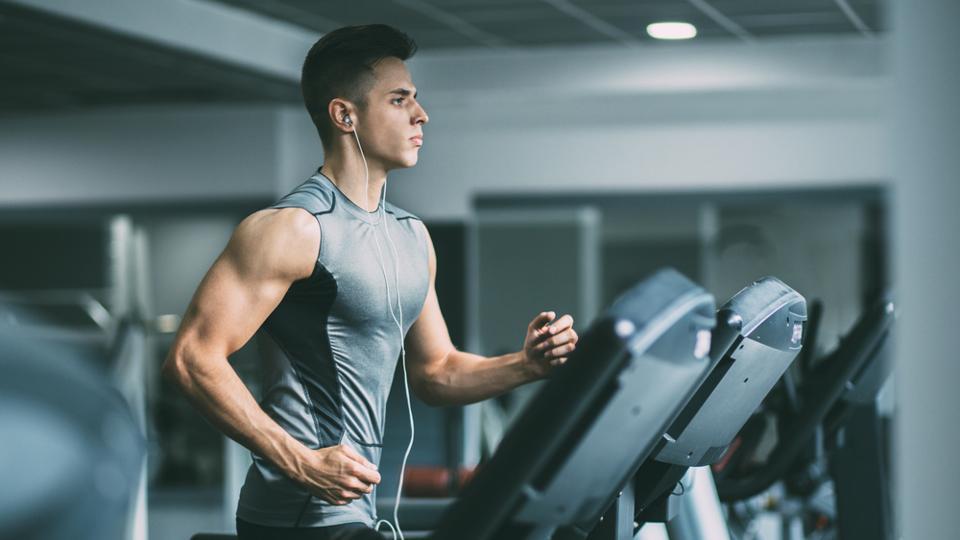
We live in fitness-conscious times. Most people agree on the benefits of exercise and make sure to at least go for a walk or a run. Others hit the gym, pound the treadmill or incorporate activities like Zumba, yoga, or pilates in their fitness regime. Yet, there remains a lot of misconceptions about exercising, be it about the duration of the optimal workout or the risk of injury from training or even about the factors that influence weight loss.
Dr Hardik Patel, Consultant Physiotherapist at Mumbai’s Hiranandani Hospital– A Fortis network Hospital, and Dr Usha Kiran, Head of Department-Dietician, Nanavati Super Speciality Hospital, Mumbai, shed light on 10 common myths about exercising:
Myth: The longer you workout, the better the result.
Fact: Workouts should be no longer than 1 or 2 hours, depending on the intensity. “The quality of workout is more important than the duration. Post-workout recovery is equally important, therefore adequate rest between workouts is essential,” says Dr Hardik Patel. An earlier study had concluded that resting for about 2-3 minutes between weight-lifting sessions at the gym helps boost muscle growth.

Myth: Strength training or workouts with weights makes a woman look ‘bulky’.
Fact: It is a common notion that women should restrict themselves to cardio, and men should lift weights. But it is not necessarily true that it makes women look “bulky”. “Weight training is a significant way to build muscles and is not gender-specific. Women produce less muscle tissue and have lower testosterone levels than men. Hence, gaining that amount of muscle overnight is not possible. However, it will help women achieve a well-toned and lean body,” says Dr Patel.
Myth: If you don’t eat carbohydrates and exercise, you will lose more fat.
Fact: “In order to burn fat, you should create a workout that includes both cardiovascular and strength-training elements. This will decrease your overall body fat content, including the area around your midsection,” says Dr Usha Kiran. She adds that apart from exercise, a change in lifestyle and diet is also needed apart for weight loss.
Dr Patel seconds that, and says that, “About 80% of what one looks like is a reflection of what you eat. One has to couple diet and exercise, under supervision, to achieve expected results.”

Myth: Running is bad for your knees.
Fact: While running may put more pressure on the joints than walking, Dr Patel says it does not necessarily have any adverse effects, even if one runs a couple of marathons a year. The key, he says, lies in regular training, stretching, hydration and resting after a run.
Myth: An aerobic workout better than going to gym, as it increases the metabolism for hours after you stop working out.
Fact: “The calorie burn from aerobic workouts is not nearly as much as you think. Also, you can’t pick and choose areas where you’d like to burn fat,” says Dr Kiran.

Myth: Protein shakes or bars can serve as a meal replacement.
Fact: In the quest of building muscle mass, many fitness lovers end up consuming protein shakes or bars, as a replacement for meals and to promote weight loss. “Although protein shakes or bars can lead to weight loss, they have to be taken as a supplement to the food consumed on a daily basis. They supplement the existent nutrients that come from your daily diet,” cautions Dr Patel. Similarly, he adds that taking vitamin supplements is not necessary either: “You do need vitamins, but if you’re eating a balanced diet, you are, in all likelihood, getting what you need from your food.”
Myth: The more you sweat, the more fat you burn.
Fact: Sweating does help regulate your body temperature, but there are several factors that cause one to sweat, which includes age, genetics, intensity of exercise as well as environmental factors. “While you may notice a drop on the scale, this does not relate to fat weight loss but instead to water weight loss,” says Dr Patel.
Myth: You shouldn’t exercise if you’re pregnant.
Fact: It’s perfectly healthy (and even recommended) for pregnant women to get regular exercise, throughout the duration of their pregnancy, says Dr Patel. “One must ensure that they don’t push themselves harder than they did before they were pregnant and that it is done under supervision of an expert,” he says.
Myth: Crunches are the key to burning fat and helps achieve flat abs.
Fact: Crunches may be the most known or iconic abdomen exercise, but they are not the only exercise for reducing belly fat. “Crunches or sit-ups only strengthen a few muscles, and do not engage your entire core. Importantly, while doing crunches, make sure your form is perfect in order to avoid injuries to the spine,” says Dr Patel.
Myth: You should stretch before your workout.
Fact: Dr Patel says that stretching before exercise is unlikely to reduce risk of injury, improve your performance or prevent sore muscles. “It will, however, help built up the body’s tempo and prep it for the workout,” he says.
[“source=hindustantimes”]








